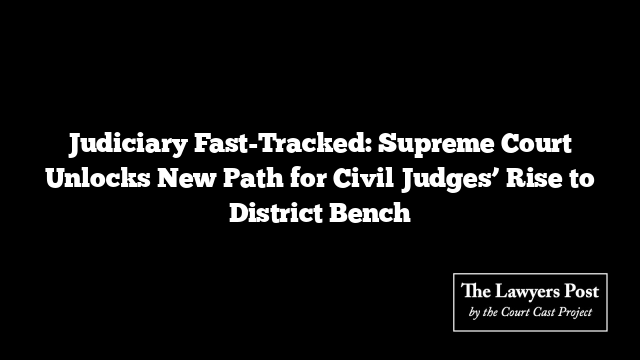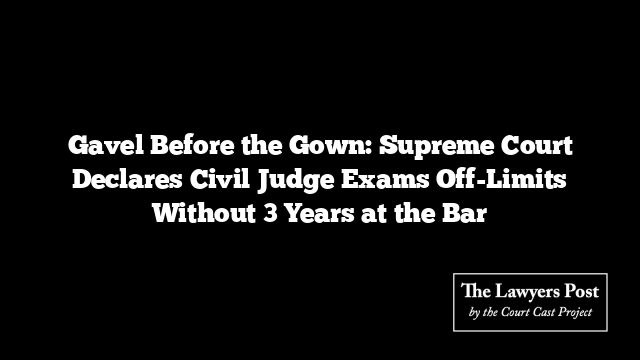In a move set to shake up the judicial promotion ladder, the Supreme Court has greenlit a significant overhaul in how Civil Judges climb to the coveted rank of District Judge. The Court has now ordered that 25% of District Judge posts be opened up for promotion through the Limited Departmental Competitive Examination (LDCE), a major boost from the previous 10%.
That’s not all—the qualifying service time for Civil Judges (Senior Division) eyeing that upward leap has been sliced down to just three years. Until now, a longer wait was required. With this change, the judiciary seems to be signalling a shift toward rewarding performance and potential over time served.
The ruling also introduces a fresh opportunity for Civil Judges (Junior Division). A full 10% of Senior Division posts are now reserved for those who can clear the LDCE route after just three years in service. It’s a new express lane—one that places a premium on merit and momentum.
The directives stem from a judgment in the long-running All India Judges Association case. The bench—headed by Chief Justice of India BR Gavai along with Justices AG Masih and K Vinod Chandran—outlined sweeping changes that must be mirrored in the service rules of all High Courts and State Governments.
Key takeaways from the Court’s mandate:
- LDCE Quota Raised: All High Courts and State Governments must revise their service rules to hike the LDCE quota for Civil Judges (Senior Division) to 25%.
- Service Time Slashed: Judges with three years in the Senior Division are now eligible to appear for LDCE, provided their combined experience (including time as Junior Division judges) totals at least seven years.
- Accelerated Path for Junior Judges: 10% of Senior Division roles will be reserved for Junior Division judges who pass the LDCE after just three years of service.
- Vacancies Must Not Linger: If LDCE-reserved posts go unfilled, they must be added back into the regular promotion pool using the ‘merit-cum-seniority’ formula, keeping promotions on track annually.
- Vacancy Math Realigned: The Court emphasized that LDCE vacancies should be calculated based on cadre strength, not ad-hoc numbers.
- Suitability Over Seniority: The revamped rules must consider candidates’ updated legal knowledge, past judgments, annual confidential reports, disposal rate, performance in interviews, and overall communication skills.
With this verdict, the Supreme Court has sent a clear message: the judiciary is ready to evolve. The bench isn’t just calling for a faster track—they’re demanding smarter filters, sharper assessments, and a justice system that rewards both excellence and efficiency.





